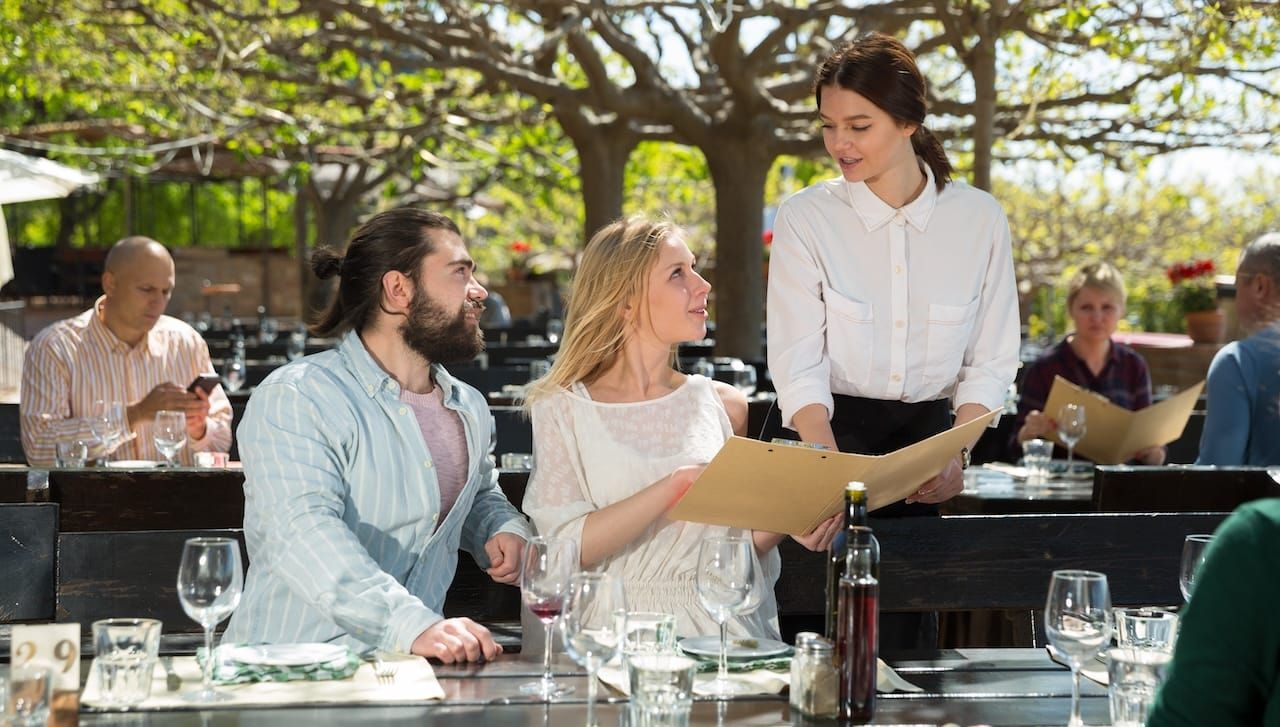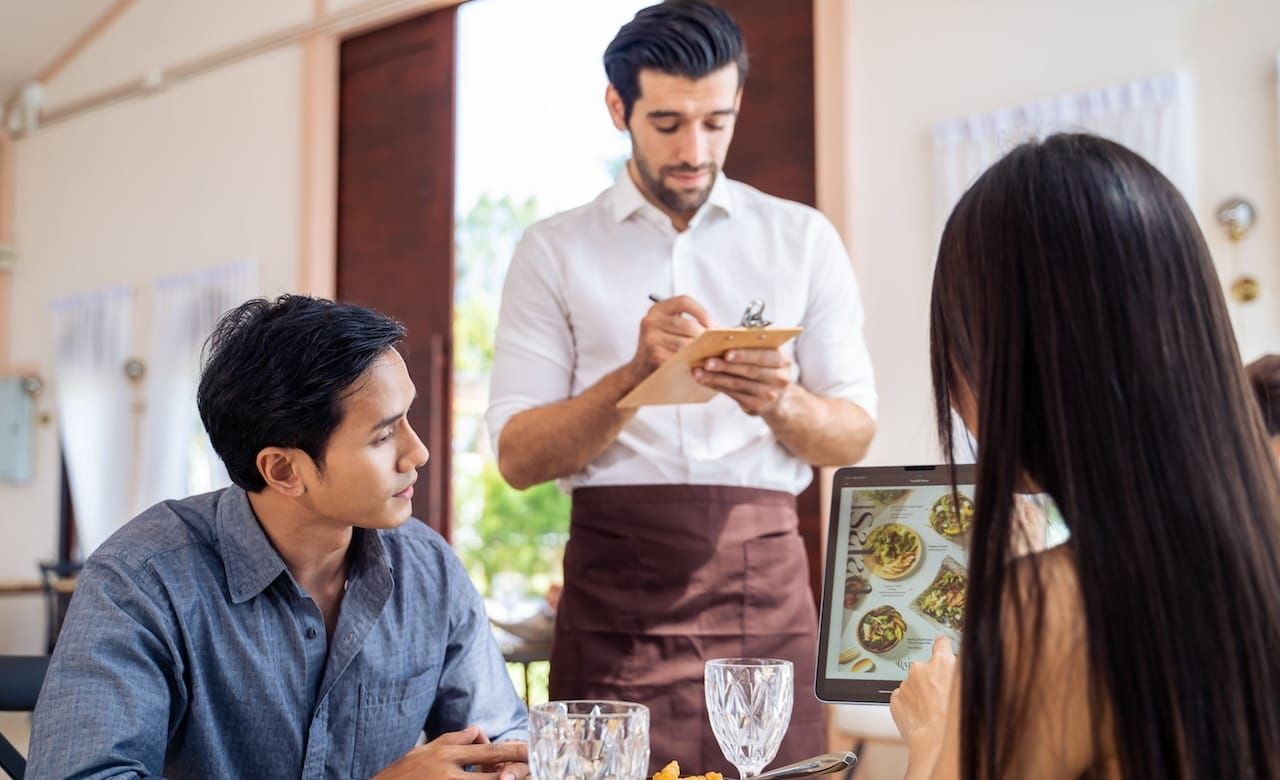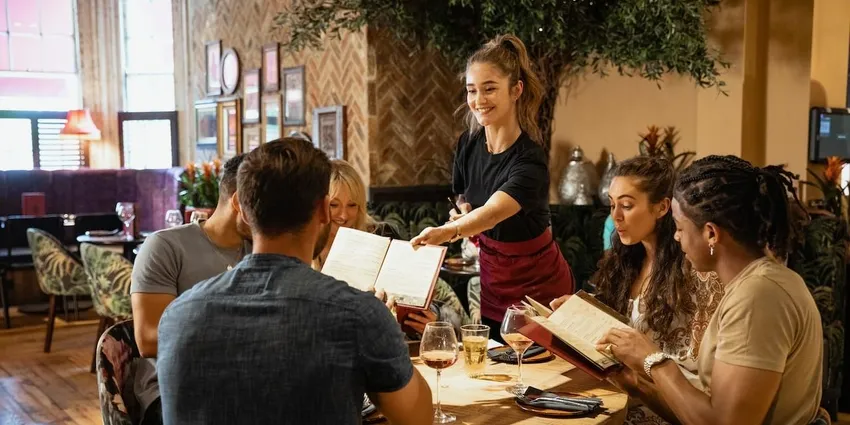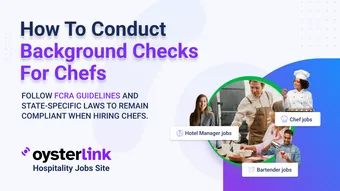Every time you walk into a restaurant, your Server notices far more than just your food and drink preferences. After all, these hospitality professionals are expected to be masters at reading guests, picking up subtle cues that shape your entire dining experience.
As a Server moves through their shift, they develop an uncanny ability to anticipate needs, manage time and handle various guest personalities. From the moment you step through the door, they're assessing everything from your body language to your group dynamics.
In this article, we’ll cover restaurant Servers' observations of dining guests and how they use these insights to provide better service.
Servers’ Observations on Guest Communication Styles
Restaurant Servers read guest signals within seconds of their arrival. These quick observations lay the foundation for personalized service throughout the meal.
Body Language Cues
A guest's posture and facial expressions tell Servers volumes about their mood and expectations. Crossed arms and minimal eye contact often signal an already frustrated diner, requiring extra attention and care. Meanwhile, relaxed shoulders and open gestures typically indicate a more easygoing guest.
Servers specifically watch how guests interact with their menus. Those who quickly scan the options might be in a hurry, while others who carefully review each item usually prefer a more leisurely pace.
Initial Guest-Server Interaction
The first exchange between a Server and a guest sets the tone for the entire meal. Accordingly, Servers pay close attention to how guests respond when they introduce themselves. A guest who immediately starts ordering without acknowledging the greeting often requires different handling than one who engages in friendly conversation.
Furthermore, Servers notice if guests make eye contact or continue conversations without pausing. These behaviors help them gauge how much interaction each table prefers throughout their meal.
Group Dynamic Assessment
The composition of dining parties provides valuable insights. Servers watch how families manage their children, how business groups organize their seating and how couples interact with each other.
When guests show dismissive behavior toward their companions, Servers note this as a potential indicator of how they might treat the staff. Groups that cooperate and show consideration for each other typically extend the same courtesy to their Server.
Compliment Patterns
Positive feedback comes in many forms, from subtle nods to direct praise. Servers notice that guests who use their names and say "please" and "thank you" consistently give more genuine compliments.
Regular customers build reputations through their communication styles. Some seem gruff yet leave generous tips and kind words, showing Servers that external behavior doesn't always match internal appreciation. These experiences teach staff not to judge guests on first impressions.
Time Management Red Flags
Guest timing patterns reveal key service challenges for restaurant staff. Smart Servers spot these signals early, adjusting their approach to maintain smooth dining experiences for everyone.
Rush Hour Behavior Patterns
During peak dining hours, Servers notice guests often underestimate the time needed for their meals. Those who arrive at 7:15 p.m. for an 8:00 p.m. schedule frequently expect their food to take precedence over other orders. This behavior creates pressure on kitchen staff and affects service quality for all guests.
In contrast, regular diners typically show more awareness of rush hour dynamics. These guests arrive early, place their orders promptly and understand the natural flow of service during busy periods. Consequently, they receive better service without creating unnecessary stress for the staff.
Last-Minute Dining Requests
The biggest problem starts when guests walk in just before closing time. Yes, it is common to see customers order multiple courses and stay for hours past closing time. They don't realize how this affects the staff's closing duties.
Last-minute diners need more attention and detailed service while the restaurant winds down. These guests often ask for complex items or want multiple changes when the kitchen prepares to close.
Reservation vs. Walk-in Guests
Guests who book ahead show more organized dining habits. They show up on time, know their table's time limit and order without delay. This leads to a smoother dining experience.
Walk-in guests, particularly large groups, don't always understand how restaurants work. A group of 20 people might show up without warning during dinner rush and wonder why they can't sit right away. The staff must handle these expectations carefully while staying professional.
The best dining experiences happen when guests know about these time factors. Learning about these patterns helps servers and diners create better restaurant visits.
Servers’ Observations During Order Taking
Menu reading patterns show us fascinating things about dining guests.
Menu Reading Habits
Regular guests read menus quite differently from first-timers. Some guests ask Servers to explain every dish in detail. This takes up precious time during busy hours. Guests often miss clearly listed ingredients on the menu. Later, they end up confused and want changes after placing orders.
Many customers place orders without reading menu descriptions properly. Servers often deal with guests who order items containing ingredients they don't eat. These guests then ask for changes or send food back after it arrives at their table.

Special Request Patterns
Guest modifications follow clear patterns during service. People wait until their food arrives to ask for condiments or extra items. This creates extra work for servers. The same thing happens with drinks — when one person asks for a refill, others at the table wait for the Server's return to place their orders.
The most common special requests include:
- Swapping standard ingredients for premium ones
- Complex check-splitting arrangements
- Changes to prepared dishes at the last minute
- Multiple separate checks for large parties
Group Order Dynamics
Large groups create unique challenges for Servers. Groups might arrive together, but their ordering gets messy when some people keep chatting while others try to order. Servers have to make several trips just to get everyone's order.
Family groups order differently from business groups. Parents tend to order for their kids without looking at the children's menu. Meanwhile, business groups usually follow a more organized approach.
Dietary Restriction Communication
Guests vary a lot in how they talk about dietary restrictions. Some people state their needs right away, while others just assume Servers should know what they can't eat. This leads to food being sent back and kitchen adjustments that could have been avoided.
Servers find that guests who clearly explain their dietary needs early on usually enjoy their meals more. Still, some people order dishes exactly as shown on the menu, then act surprised about ingredients they can't have.
Drink Order Timing
Servers notice guests spending lots of time looking at food options but skip the drink menu, yet drinks usually come first. This habit often slows down beverage service and throws off the dining flow.
Cultural and Regional Differences
Servers must become skilled at handling unique service dynamics that stem from regional and cultural differences to deliver exceptional dining experiences. They need to understand these variations to adapt their approach to guests from different backgrounds.
International Guest Expectations
Diners from different countries bring their own service expectations based on their homeland's customs. European guests tend to prefer less attention from servers, while American diners want frequent check-ins and quick responses.
A guest's cultural background shapes how they interact with servers. Some international visitors are extremely formal with service staff, while others take a more relaxed approach. Servers need to adjust their style and demeanor to match.
Regional Dining Habits
A guest's regional background often shows up in how they order drinks. Midwesterners ask for "pop," while people from Georgia say "Coke" for any carbonated drink. This leads to some funny conversations between servers and their guests.
Local customs shape how people dine out. Southern diners have different expectations about meal pacing than their Northern counterparts. People from coastal areas also show unique patterns in how they order and want their seafood prepared.

Language Barrier Navigation
Servers need creative ways to handle communication challenges. International guests often point to menu items or use gestures everyone understands. The best Servers develop ways to communicate without words to take orders and serve accurately.
Menu words often confuse people who don't speak English as their first language. Servers find themselves describing ingredients and cooking methods to international guests. This sometimes makes ordering take longer as Servers work to make everything clear.
Cultural Etiquette Variations
Each culture's unique dining customs affect service interactions. Some groups share all their dishes family-style, while others want individual servings. Servers use this knowledge to set tables and time food delivery the right way.
Tipping practices change a lot between cultures, but Servers maintain their professional standards whatever the expected tip might be. Experienced staff know that international guests follow their home country's tipping customs.
Conclusion on Restaurant Servers' Observations of Dining Guests
Understanding how Servers interpret and respond to guest behaviors enhances the dining experience for both parties. These professionals observe cues from initial body language to payment habits, adjusting their service accordingly. By mastering the art of reading guests, Servers can anticipate needs and manage diverse situations effectively.












Loading comments...